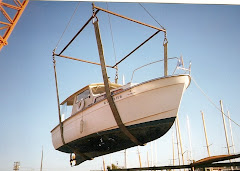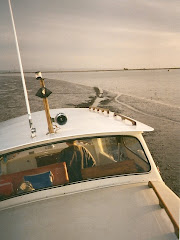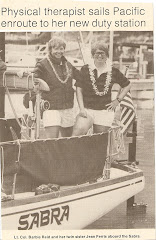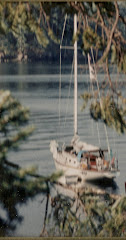On 28 April 1792, a lookout on the Discovery sees a ship entering from the north west and is on a converging course. They had been sailing the high seas for a year now, and it was their first sighted sailing vessel in 8 months. Upon approach it was recognized as the trading ship, the Columbia Rediviva with her famous American Commander Captain Gray. He had fought hard in the American Revolution on a Naval vessel, and was not happy to see British ships in this area. Captain Gray ordered a shot fired and all ships hove to. Vancouver gave the order for Lt Peter Puget and Mr. Archibald Menzies, the Scottish botanist/surgeon to go in the launch and speak with Captain Gray, in order to confirm/find the great Strait of Juan de Fuca, which hopefully would then link them to the Northwest Passage. Menzies stated in his journal they had found it extremely interesting to have run across the Boston sea captain at the exact time in which they needed to confirm the position of the illusive strait.
Myth had just joined forces with coincidence and the mariners, cautiously, shook hands. During their 2 hour conversation Captain Gray was astonished to learn, for the first time, from the HMS Discovery envoy, a British mariner, Captain John Mears, had given him credit for sailing 20 leagues(1 league equals 3 miles) into the strait and made claims the American Captain had circumnavigated Vancouver Island. Captain Gray stated that upon going 17 leagues into the Strait(west of Port Angeles) he then exited. He, also, stated in the northern Queen Charlotte Islands( Haida Gwaii) indians had killed some of his crew and in fact, had held the Lady Washington captive for several hours. The Lady Washington was the first ship to fly the American flag, when she plied the waters of the northwest following the Revolutionary War with England. This maritime meeting of 3 great ships and their Commanders had clarified the nautical myths and calmed the waters of uncertainty.
Captain Vancouver continued to take the HMS Discovery/Chatham north along the remainder of the Washington coast and in a short time they entered the Strait of Juan de Fuca. For 50 years the British Government had offered military and civilian vessels a 20,000 pound reward for discovering a north west passage. This was big business and Vancouver wanted to succeed and so did every man onboard. They have been at sea for a year and their primary mission was about to begin.
Immediately, they began the exploration of the first Indian village between Neah Bay and Cape Flattery, which Captain Vancouver called, Classet. As a precautionary and somewhat suspicious measure, Captain Gray decided to alter his course and followed the vessels into the Strait of Juan de Fuca to make certain that these Naval Ships, were in fact, exploring and not, infringing upon his fur trading business. He was satisfied after a day and proceeded to follow his original course south along the coast and claim fame when he discovers and gains entrance to the Columbia River.
As the British ships plied the waters eastward into the deeper reaches of the Strait they made 16 anchorages and explored villages, took sights, soundings, and drew charts. At the junction of the Straits and the southern and northern waters, Captain Vancouver sent the HMS Chatham north to explore the San Juan Islands and he turned south and entered what is now Admiralty Inlet, and named Port Townsend after the Marquis Townshend. They now have penetrated further into these waters than any other white man and the Indians they met were seeing white men for their first time in their lives. Would they be friendly or hostile?
They were in uncharted waters and became the first map makers of this portion of the Salish Sea. As you look out from the bow of your own boat, in this area, you are confronted with numerous land masses and inlets. Captain Vancouver orchestrated an unbelievable exploration of every major inlet in the southern waters and after the HMS Chatham did the same in the northern waters the two vessels rendezvoused at Restoration Point, on Bainbridge Island, and continued exploring southern waters until the return of Lt Puget and company on 27 May 1792.














